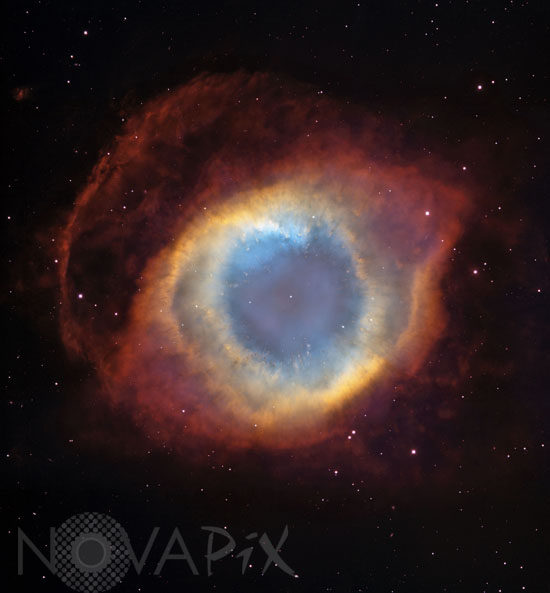Photo Agency - Astronomy - Space - Nature

Planetary nebula Helix in Aquarius
author: ESA/Nasa/NOAO/Novapix
reference: a-nep72-93002
Image Size 300 DPI: 52 * 56 cm
This composite image is a view of the colorful Helix Nebula taken with the Advanced Camera for Surveys aboard NASA's Hubble Space Telescope and the Mosaic II Camera on the 4-meter telescope at Cerro Tololo Inter-American Observatory in Chile. The object is so large that both telescopes were needed to capture a complete view. The Helix is a planetary nebula, the glowing gaseous envelope expelled by a dying, sun-like star. The Helix resembles a simple doughnut as seen from Earth. But looks can be deceiving. New evidence suggests that the Helix consists of two gaseous disks nearly perpendicular to each other. One possible scenario for the Helix's complex structure is that the dying star has a companion star. One disk may be perpendicular to the dying star's spin axis, while the other may lie in the orbital plane of the two stars. The Helix, located 690 light-years away, is one of the closest planetary nebulas to Earth. The Hubble images were taken on November 19, 2002; the Cerro Tololo images on Sept. 17-18, 2003.
Contact : Stéphane Aubin +33-(0)9-51-26-53-76
© Novapix - All rights reserved


